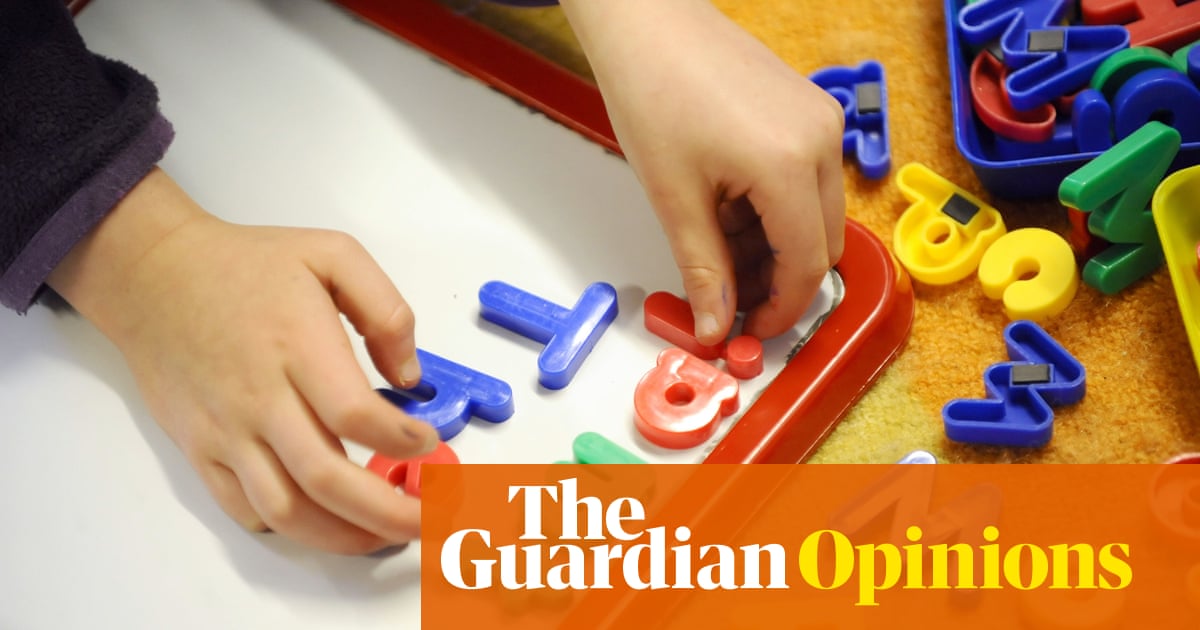
You can’t get much for £5.50 nowadays. A takeaway coffee and a muffin, maybe; a pint and a packet of crisps, outside London. But in parts of Canada, roughly that amount can buy you a day’s childcare. Or it can, at least, if you can find a nursery place.
The country is now three years into a post-pandemic social experiment, offering parents heavily (and expensively) subsidised childcare for what is by envious British standards a staggeringly cheap C$10 a day. The idea is that ultimately this multibillion-dollar state programme will pretty much pay for itself, thanks to the boost in GDP expected to be provided by more parents going out to work. But arguably, its biggest insight has been treating childcare less as some kind of perk the state sadly can’t afford right now and more as what Chrystia Freeland, Canada’s deputy prime minister, calls “social infrastructure”: an essential part of the national plumbing, like commuter trains or fast broadband or any other thrusting great multibillion-pound building project we are wearily prepared to believe will ultimately be worth it.
Inevitably, Canada’s cheap childcare has been dogged by much the same woes as most conventional infrastructure projects, from the near-inevitability of going over budget to what parents complain is a patchy rollout. Recruiting enough staff to match demand has been a struggle, given they’re still not well paid, which leaves too many families scratching around for nursery places, especially in big cities. But labour market participation among mothers has nonetheless rocketed. And for a country that could get this kind of tricky experiment right, the gains from treating infrastructure as something more than bricks and mortar would be huge. In the US, new research suggests that for every dollar spent on universal pre-kindergarten (early years provision for three- and four-year-olds) in Connecticut, families gain about $5.51, largely in higher earnings.
Back in Britain, on the other hand, a survey from the campaign group Working Families this week found one in three parents of under-11s had to cut their working hours because they either can’t find or can’t afford childcare. Another quarter were relying on someone else in the family – a grandparent or a partner – sacrificing paid work in order to help out. Though ministers are now trying to honour a Conservative pledge of 30 hours a week free childcare for children over nine months by next autumn, the education secretary, Bridget Phillipson, says bluntly that it “won’t be the sunlit uplands promised by the Tories”, arguing that her predecessors failed to put in the groundwork or the cash to make it a reality. It’s probably not entirely a coincidence that deaths in this country are now outstripping births for the first time (outside a pandemic) since the 1970s. Who could blame millennials for going on baby strike, when they see colleagues with kids hanging on at work by their fingernails?
So long as they aren’t hopelessly watered down in the two years of haggling that will now presumably ensue, the new rights at work promised this week by Angela Rayner could represent some light at the end of the playground tunnel. Her proposals take on board two big lessons from lockdown, namely that scrimping on sick pay is ultimately a false economy – we’d have lost fewer productive days during the pandemic if people in low-paid, insecure jobs had felt able to take time off when they started coughing – and that employers can be surprisingly flexible when pushed. For parents of small children who are desperate to spend more time at home, but don’t want to throw in the professional towel altogether, home working, nine-day fortnights or whatever form of flexibility suits can obviously be a godsend.
But UK ministers estimate the package in its entirety could also get 1.7 million people currently out of the labour market – many of them caring for children or elderly relatives, or both at once if they’ve really hit the classic middle-aged jackpot – back into work, a significant contribution to its endlessly hyped mission for growth. The next and more expensive step however is investing in the human infrastructure without whom that 1.7 million will struggle to leave the house: the nursery workers, carers, occupational therapists to help the long-term sick back into work, and all the other invisible public service wiring without which things fall apart. Or to put it another way, if this month’s budget is supposed to be about loosening the financial straitjacket and cannily investing for growth, that has to mean more than stretching HS2 to Euston.
Two years ago, for the women’s magazine Grazia, I interviewed a politician who seemed to get that growth is about people, as well as bricks and mortar. She scoffed at ministers’ fondness for posing in hard hats and hi-vis jackets to talk about raising productivity, pointing out that for many women the single biggest barrier is good childcare. She talked, too, about how the consequences of that reverberate through generations: her own mother had, she thought, retired earlier than she otherwise would have because managing work, her own elderly parents and helping out with the grandchildren was too much. If you haven’t guessed by now, that politician was Rachel Reeves, and she was very keen to talk about how a woman in the Treasury might see growth a little differently than all the men who had gone before. If so, then now is the time to show it.